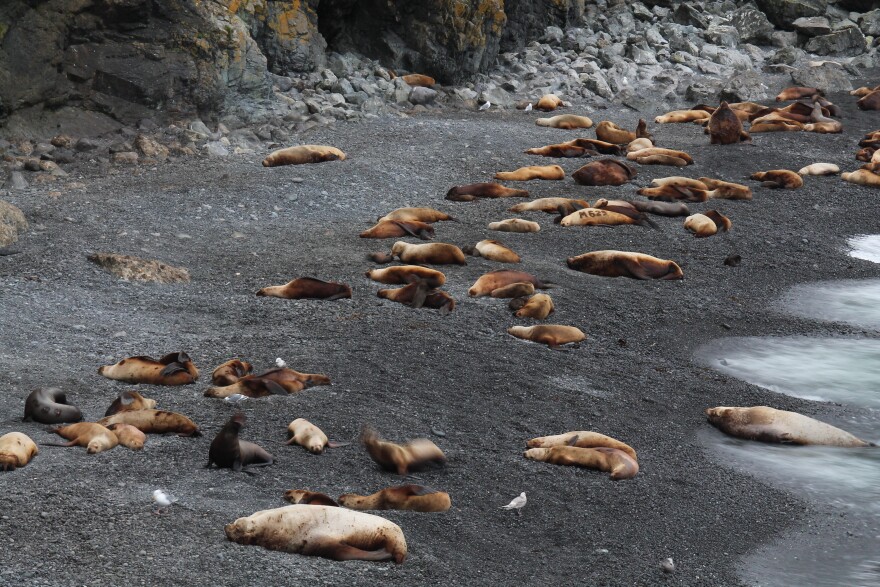In an effort to figure out what’s behind the mysterious decline of Steller sea lions, scientists are trying out crowdsourcing for the first time. The project is called Steller Watch. The idea is to convince the public to comb through pictures looking for sea lions.
Scientists from the Alaska Fisheries Science Center have remote cameras stationed in the western Aleutian Islands that take pictures every five to 20 minutes every day of the year. From last year alone, they have nearly 400,000 images.
The cameras go off whether there’s a sea lion present or not. Right now, there’s only one question for the citizen scientists: Do you see a sea lion in this image?
Biologist Katie Sweeney says this information will help scientists analyze images in a timely manner.
“That’s important so we can come up with important population estimates and figure out why the Steller sea lion, which is endangered, is not recovering in the Aleutian Islands,” Sweeney said.
After they’ve built up a pile of pictures that have sea lions, Sweeney says they’ll start another phase to the project — looking for marked sea lions.
By monitoring marked animals, scientists can study sea lion movement, fertility and lifespan. The information could help these researchers identify what’s behind the animal’s decline.





